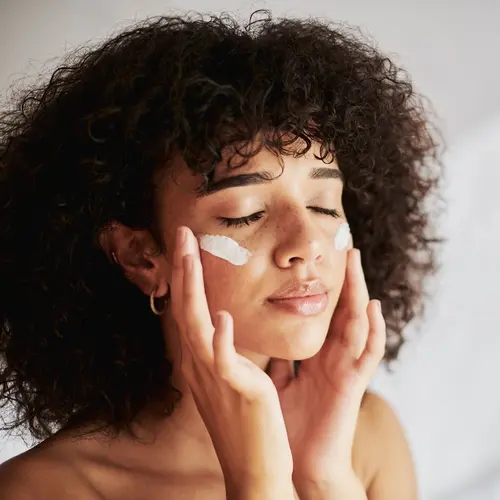Strawberry legs is not a condition in and of itself. Instead, strawberry legs refers to the appearance of the pores on your legs and can be used to describe several skin conditions. If you have strawberry legs, your legs may have dark dots that are similar to the seeds in strawberries.
Understanding Strawberry Legs
Folliculitis. This common skin condition is often found on the legs, among other body parts. Folliculitis may cause the appearance of strawberry legs when hair follicles are inflamed, infected, or irritated.
At first, the hair follicles may appear darker. If folliculitis worsens, your skin may become infected, turning red and even swelling. There are several types of folliculitis:
- Staphylococcus aureus folliculitis. This particular bacteria may get trapped in your hair follicles, causing red, pus-filled bumps. It usually resolves on its own within a few days.
- Pseudomonas aeruginosa folliculitis. This bacteria is prevalent in shared hot tubs and whirlpools where water is heated. It is often red and itchy but resolves on its own within a few days.
- Malassezia folliculitis. Malassezia is a type of yeast that may get into your hair follicles, causing irritation. It may worsen and look like acne if left untreated.
- Pseudofolliculitis barbae. These are also called razor bumps and occur from irritation during shaving. It is more prevalent in people with dark, thick, curly hair.
- Sycosis barbae. This is also related to shaving, but is much worse than razor burn because the hair follicles become infected.
- Gram-negative folliculitis. If you take antibiotics to treat acne, you may develop these antibiotic-resistant bacteria.
Ingrown hairs. If you shave or wax your legs, the hair may grow back incorrectly. If hairs are trapped under the skin, they cause inflammation and tiny bumps. This condition may be painful and itchy.
Ingrown hairs usually resolve on their own without specific treatment. Signs that you have ingrown hairs on your legs after shaving include:
- Papules (small, dark bumps)
- Pustules (bumps that are filled with pus and look like blisters)
- Darker patches of skin
- Itching or pain
- Hairs trapped beneath the skin
Acne. Acne extends into the sebaceous glands of your hair follicles. If your follicles produce too much sebum to moisten your skin and hair, it may clog your pores. Most people between the ages of 11 and 30 experience acne at some point in their lives.
When sebum production is too high, it causes dead skin or oil to become trapped. Bacteria that are normally on the skin may also get into the clogged pore. Acne may appear as closed whiteheads or open blackheads, which look like strawberry legs. Sometimes the pores are infected, appearing inflamed, swollen, and irritated.
Factors that contribute to acne include:
- Hormone changes that occur during pregnancy or your monthly menstrual cycle
- Increased hormones during puberty
- Use of skin products that clog your pores
- Tight clothes that irritate your skin
- High humidity
- Sweating
- Some medications
How to Treat and Prevent Strawberry Legs
No matter what the cause, darkened hair follicles leave you with the appearance of strawberry legs. Fortunately, you can prevent and treat some contributing conditions.
Treating folliculitis. Limit bacteria present on your skin by using antibacterial cleansers on your legs. If your rash and irritation don’t clear up within a few days, your skin may be infected. Talk to your doctor about your symptoms because you may need an antibiotic. Prevent the condition from causing strawberry legs by using an antibacterial cleanser regularly.
Treating ingrown hairs. Make sure you’re using proper technique when shaving your legs. Tips for shaving include:
- Allowing hot water to soften your leg hairs before shaving
- Shaving with the grain of your hair instead of against it
- Using a shaving cream or gel each time
- Shaving less frequently
- Not pulling your skin tight when shaving
- Exfoliating to remove dead skin
- Not tweezing hairs
- Applying lotion after shaving to soothe your skin
- Avoiding chemical hair removers, or testing a small area first
Treating acne. Acne is one skin condition that leaves a greater chance of scarring. You can treat acne with over-the-counter cleansers and creams. If these don’t work, you may want to ask your doctor for prescription skincare. Look for active ingredients like benzoyl peroxide, tretinoin, or adapalene.
Chronic acne may require laser or light therapy or a chemical peel. If your acne is infected, an antibiotic can kill bacteria and give your skin a chance to heal.
Once your skin heals from any of these conditions, be proactive in keeping your skin clean. Use proper shaving techniques and avoid anything that will further irritate your skin if you notice existing irritation.
Risks of Strawberry Legs
Chronic skin irritation may lead to permanent damage or more serious health conditions. If your skin is infected, talk to your doctor immediately. If your skin conditions persist, the infection may spread to other areas of your body.


